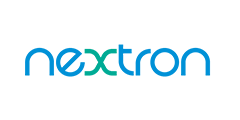3 Secrets to Avoid Common Failures of SFP/SFP+ Connectors and Cages

SFP/SFP+ are Widely Adapted in 5G Era.
Since 1976, optical fiber has gradually taken over the world of telecommunication and data transmission. Today, as an important part of 5G infrastructure, fiber optic cables can be seen in RUs.
SFP connectors and cages are born to facilitate fiber optic data transmission. SFPs are hot-swappable and allow individual ports to be equipped with any suitable type of transceiver as needed, which greatly reduce the cost of fiber optic communication.
Though not a new product, SFPs/SFPs+ are now widely adapted to support 5G fronthaul data transmission.
3 Common Problems of Unsuitable SFPs
The design of transceivers varies a lot from one to another, you might encounter difficulty while stabilizing or ejecting transceivers if the chosen SFP isn’t suitable for your product.
Also, problems as listed below can happen to unsuitable SFPs:
Frame deformation:
This might be the most common and bothering failure you might encounter if you choose a “bargain” receptacle. Many suppliers use thinner material to reduce cost, which results in deformation of frame and spring. A wrong design or choice of material of EMI spring can also easily cause frame deformation and damage to transceivers.

Press-fit failure:
Press-fit is a common process of SFP/SFP+ receptacle installment. Incorrect design of the eye of needle may result in high press-fit failure rate and high cost of rework. Deformation of needle will also cause internal disconnect or board damage.

Oxidation of materials:
To reduce cost, some suppliers plate the cages after assembly. However, this increases the risk of oxidation between gaps. Nowadays, more and more switches and routers are installed at outdoor environment. The oxidation will be a penitential risk when choosing low price SFP/SFP+ receptacles.

Nextron’s Unique Design
Our unique SFP design can solve problems mentioned above effectively.
1. To balance the strength of cage and the flexibility of EMI spring, Nextron leverages different materials and designed thickness as a whole, then lacer wielding after automatic assembly.

2. With over 30 years of press-fit experience, Nextron’s press pin has unique lead-in and coin structures to ensure each pin correctly insert PCB without unnecessary damage. The eye of the needle is also designed for best retention force for different through holes.

3. We adapt Copper-Nickel-Zinc Alloy material and stainless steel to avoid any potential oxidation risk to the whole product line.
- +1 Like
- Add to Favorites
Recommend
- The Difference between FFC Connectors and FPC Connectors
- DIN EN 1100 Certified WSMP® Coaxial Connectors, 45% Smaller than Standard SMP Connectors
- What is the Role of Industrial Connectors? What Types of Industrial Connectors Can Be Divided into?
- The Development of High-Voltage Connectors
- ept Colibri® 0.5 mm-pitch SMT Connectors Colibri® 0.5 mm-Pitch SMT Connectors: Maximum Flexibility with Data Transfer Rates of Up to 16 Gbps
- What will be The Development Trend of Connectors in the Future?
- Analyze The Role of Wafer Connectors in PCBs From Design to Function
- How to Select Board-to-board Connectors?
This document is provided by Sekorm Platform for VIP exclusive service. The copyright is owned by Sekorm. Without authorization, any medias, websites or individual are not allowed to reprint. When authorizing the reprint, the link of www.sekorm.com must be indicated.





































































































































































































































































































































































































































































































































































































































































































































































































































